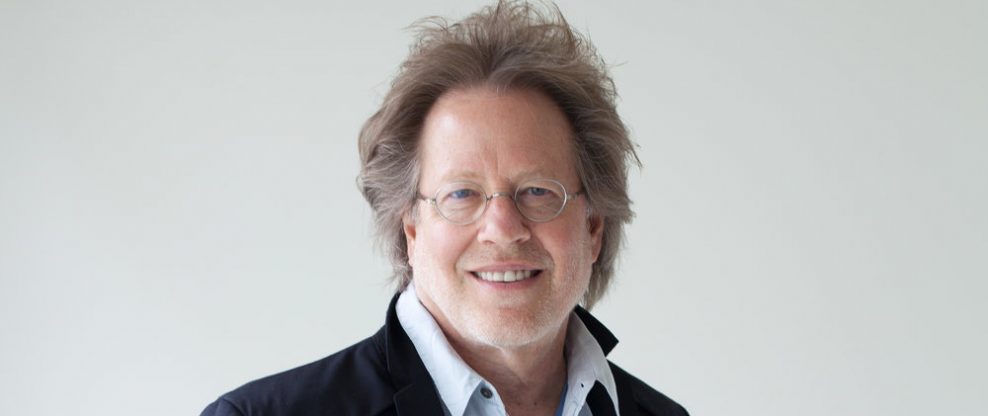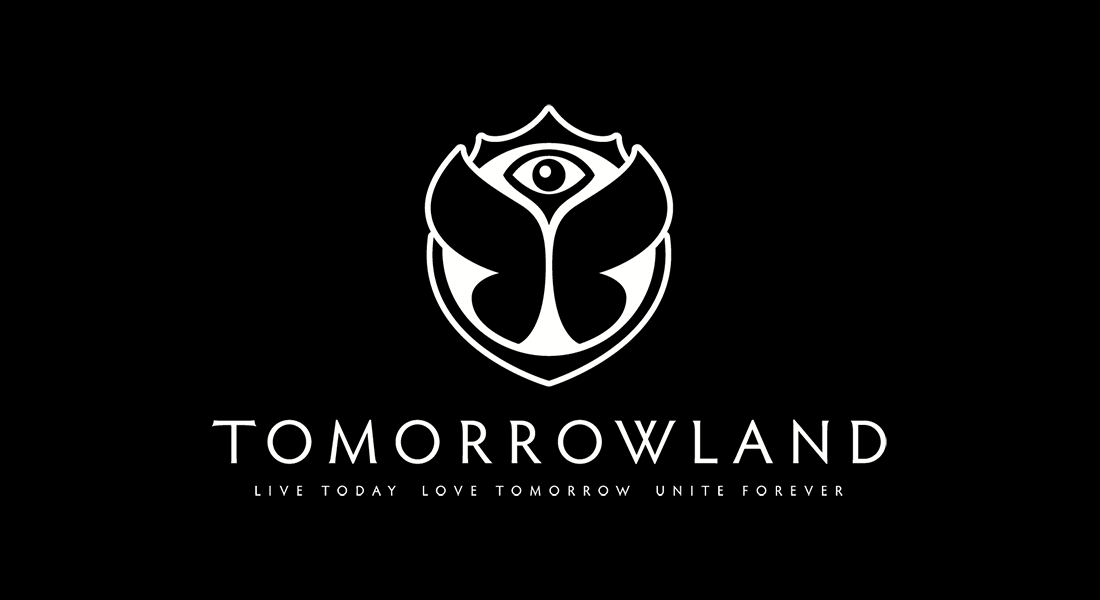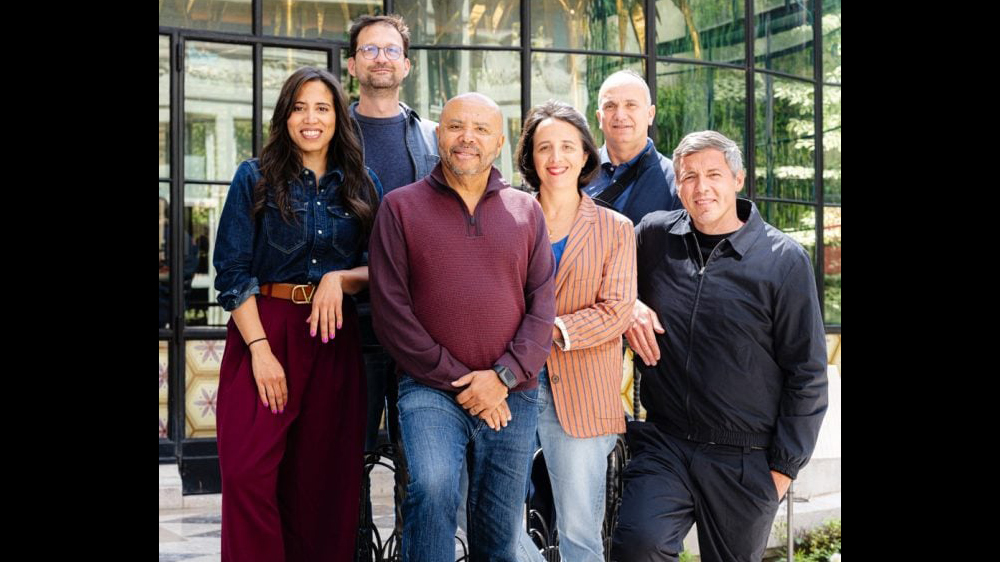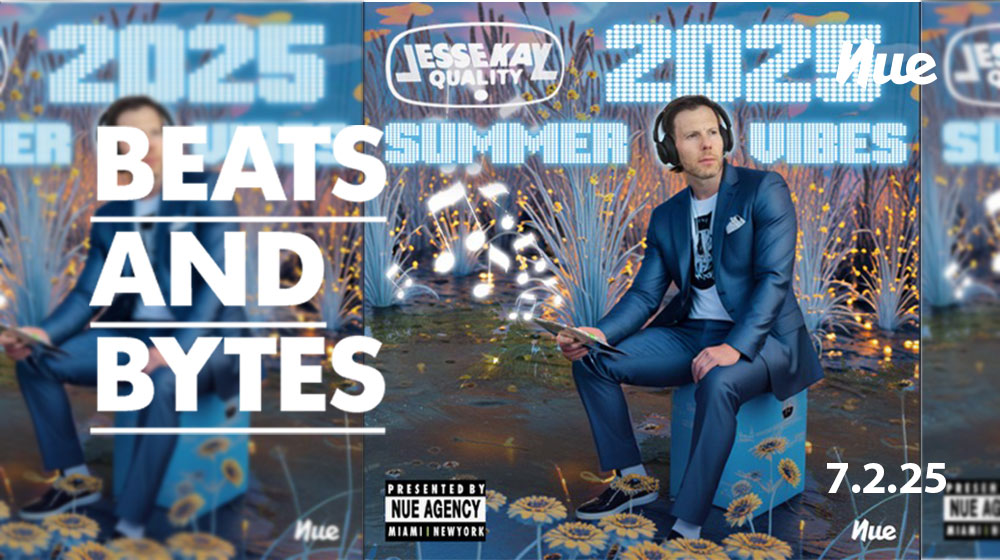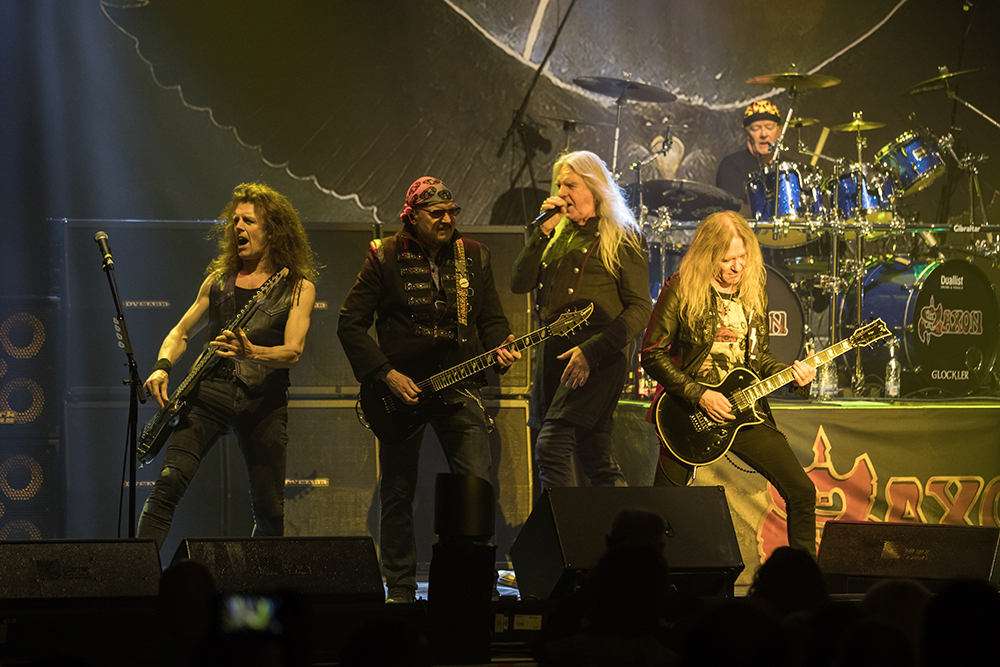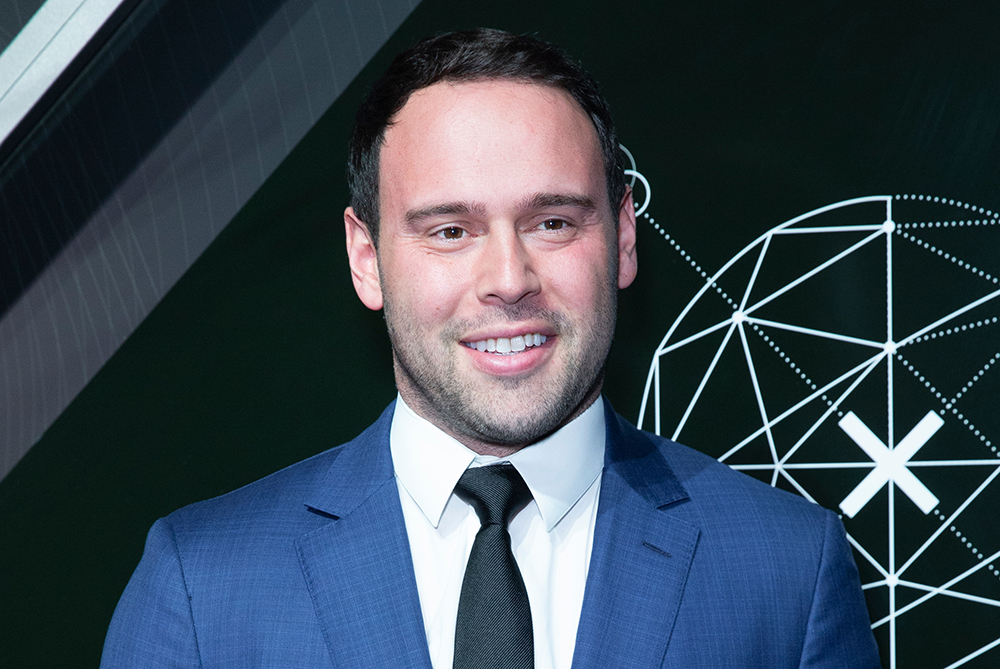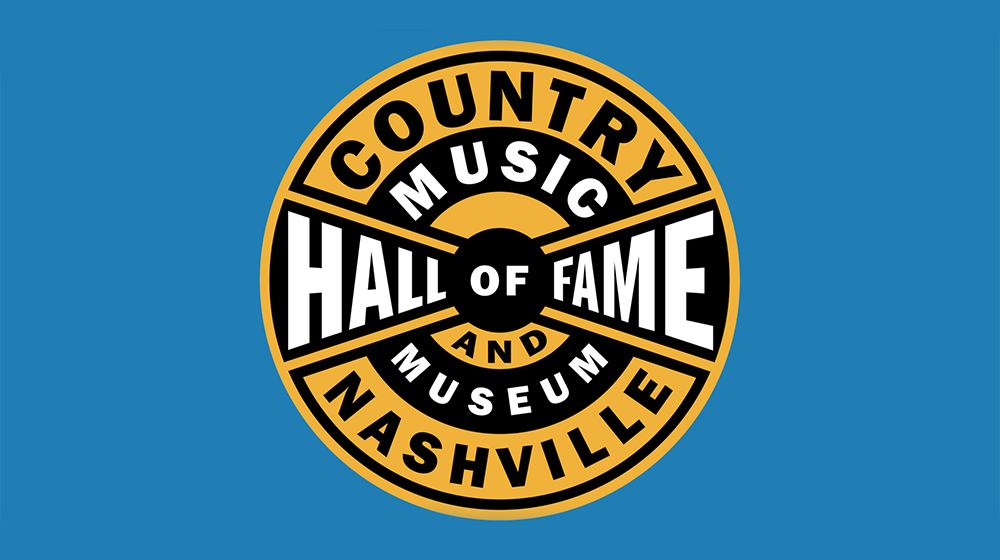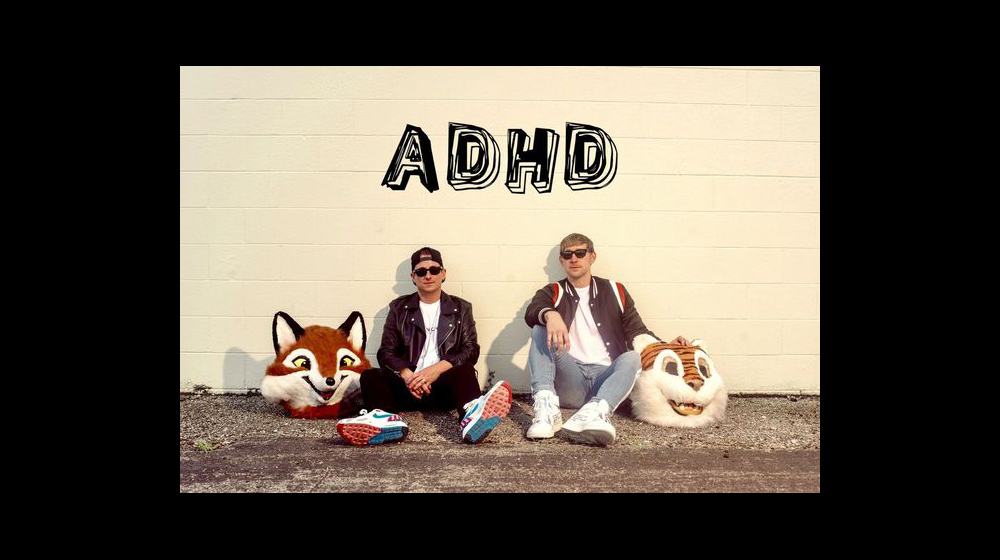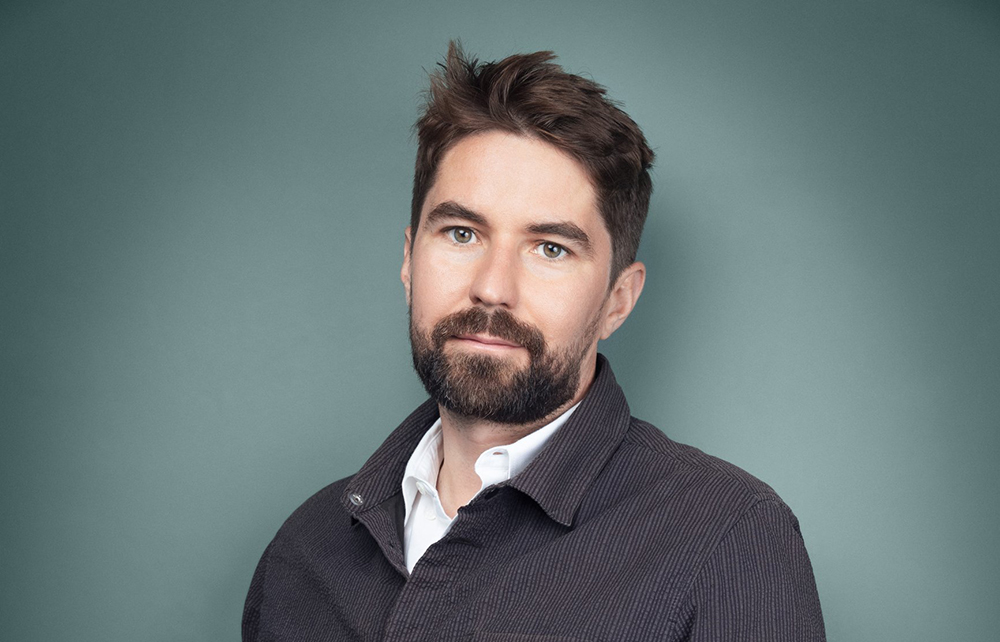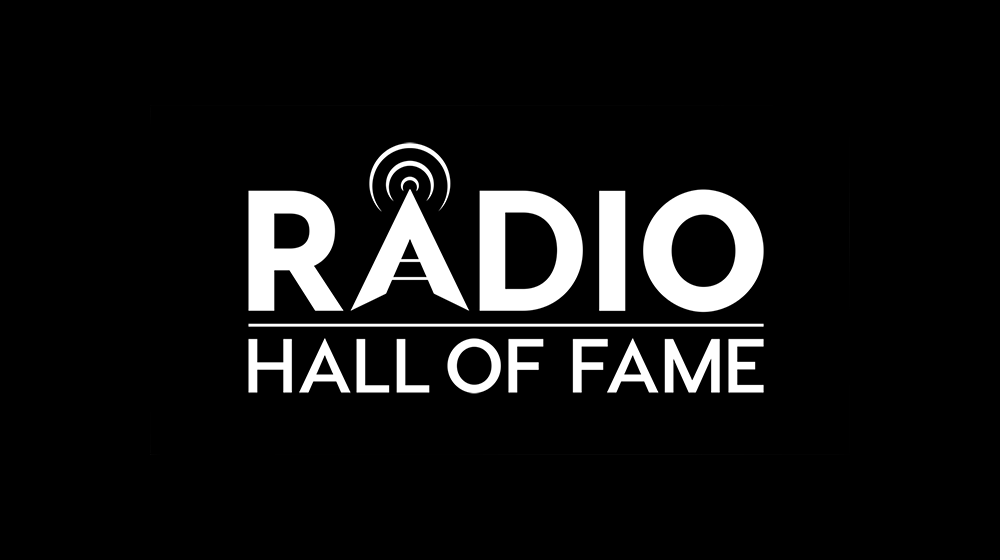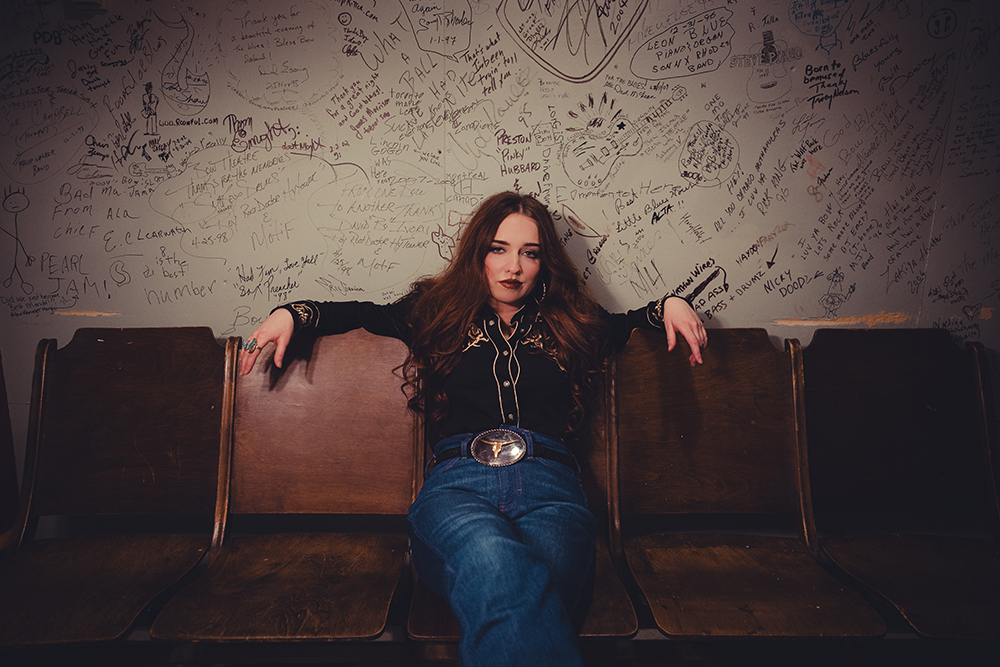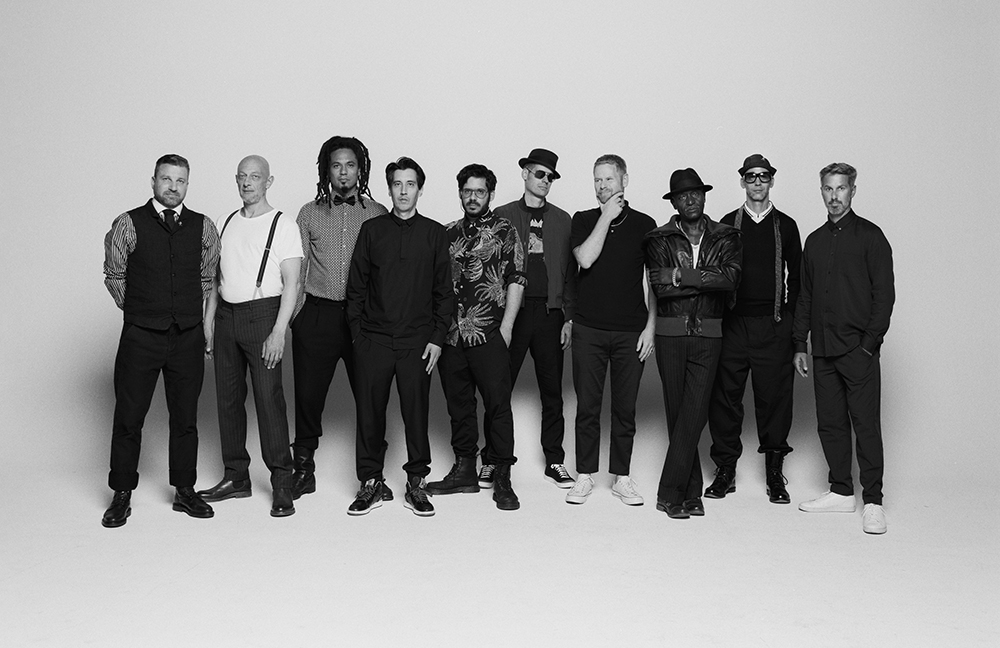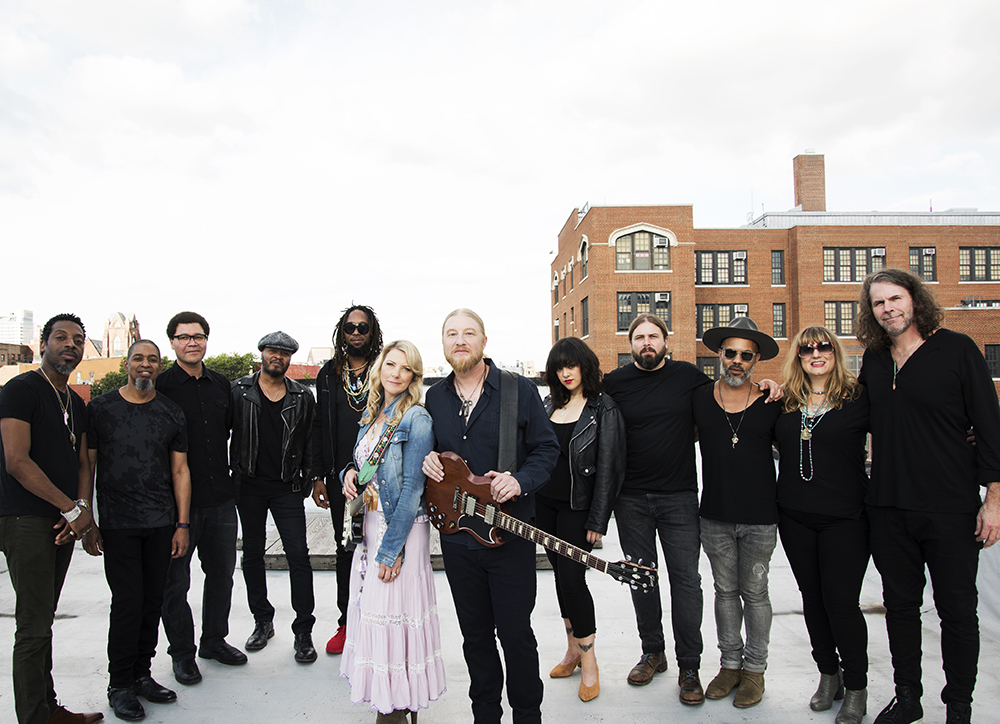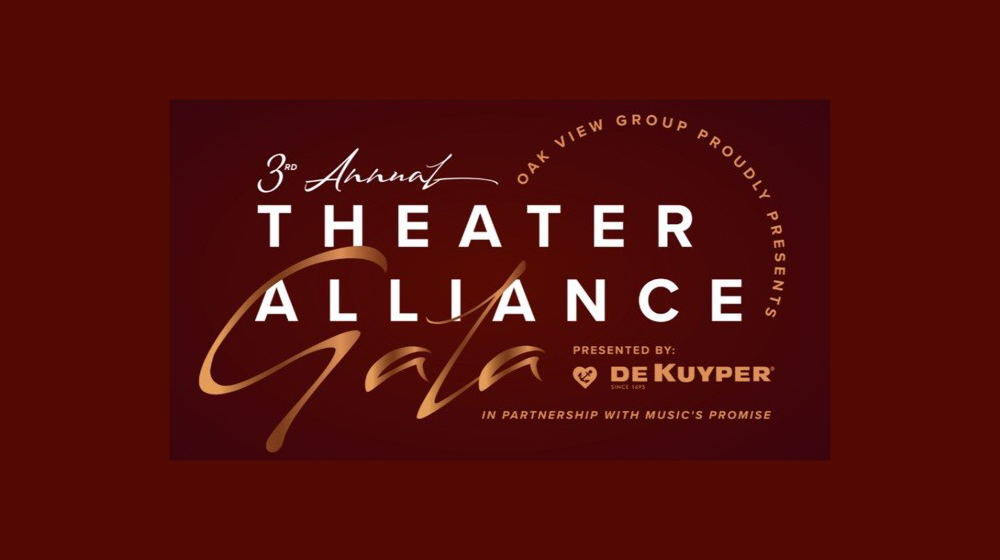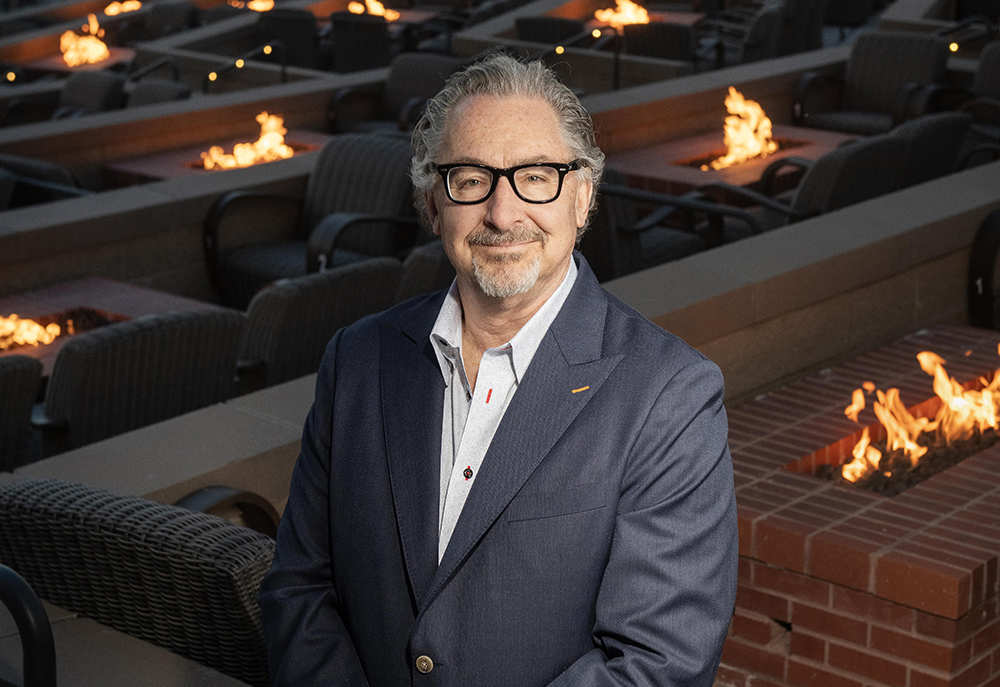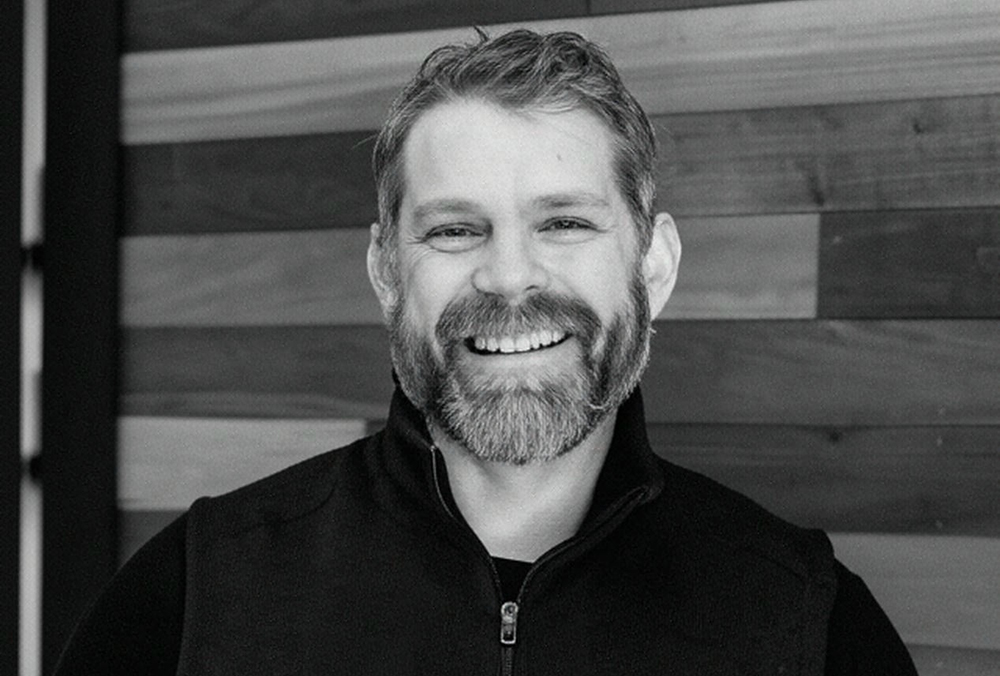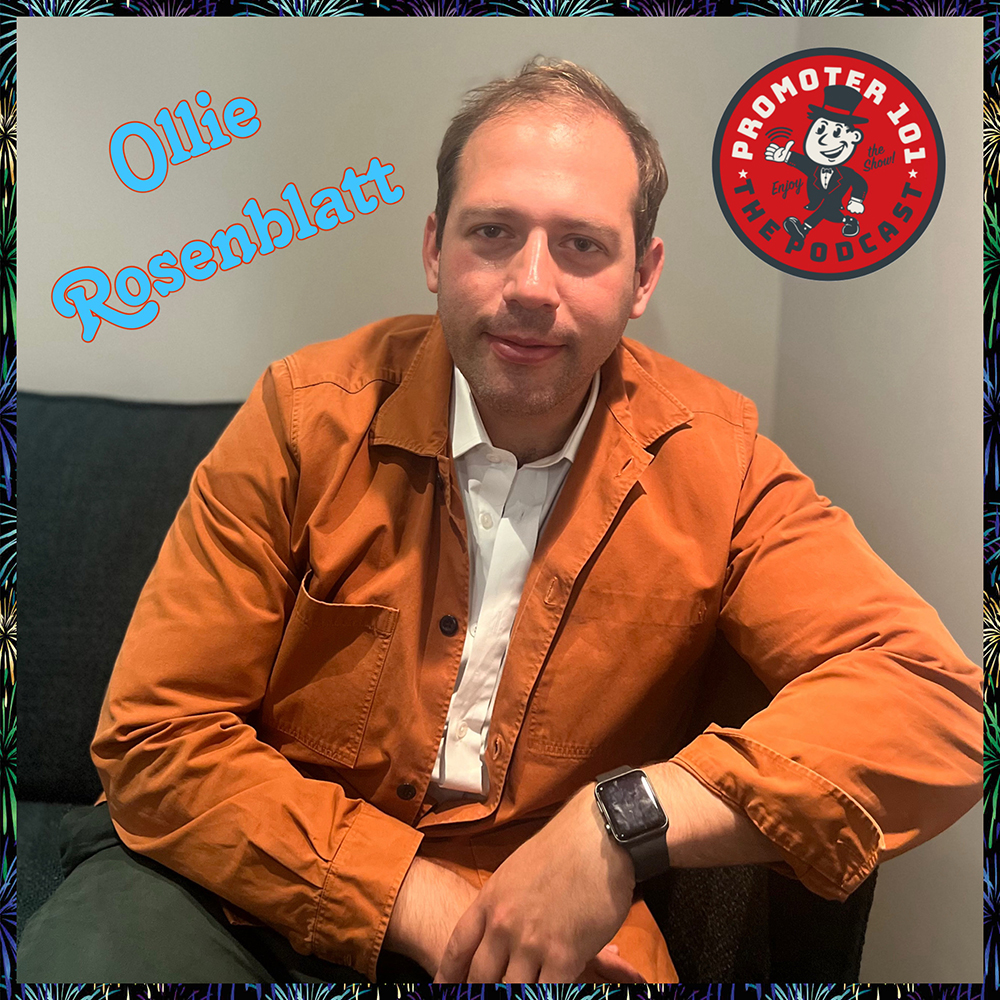This week In the Hot Seat with Larry LeBlanc: Steve Dorff, producer, songwriter.
Pick most any letter of the alphabet, and producer/songwriter Steve Dorff has likely had a song recorded by an artist with that letter in their name.
Dorff has written “thousands” of songs, had more than 400 songs recorded, and he has had 14 #1 hits.
Among his prominent covers are Barbra Streisand (“Higher Ground,” and “It Must Be You”), Whitney Houston (“Take Good Care of My Heart” with Jermaine Jackson), George Strait (“I Cross My Heart,” “Heartland,” and “The Man In Love With You”), Garth Brooks (“Baby, Let’s Lay Down and Dance”), Ronnie Milsap (“Cowboys and Clowns”), Celine Dion (“Miracle”), Kenny Rogers (“Through The Years”), Clay Walker (“My Heart Will Never Know”), Lee Greenwood (“Don’t Underestimate My Love For You”), and Eddie Rabbitt (“Hypnotize the Moon” and “Every Which Way but Loose”).
Barbra Streisand recently issued a previously unreleased single duet with Willie Nelson, “I’d Want It to Be You,” co-written By Dorff with Bobby Tomberlin and Jay Landers, that will also appear on her upcoming rarities album, “Release Me 2,” due August 6th.
The duet, one of 10 previously unreleased tracks, was intended for Streisand’s 2014 album, “Partners,” but it didn’t make the final cut as the track was uncompleted. Instead, Streisand recorded a version of the song with Blake Shelton for “Partners.”
New Yorker Dorff moved from Los Angles to Nashville in July 2019 after coming there to work for the better part of 25 years. He has since signed an exclusive deal with Demolition Music Publishing.
Dorff has been recharged by the change in location.
He co-wrote the lead-off single, “Sunny And Warm,” for Keb’Mo’s upcoming album; he produced the Nashvillains’ single “Who Don’t”; and is currently in the midst of producing and arranging John Berry’s upcoming Christian album.
Over a 36 year span, Dorff’s scoring assignments have included hundreds of television episodes, telepics, and feature films.
Among those are the films: “Bronco Billy”, “Blast From The Past”, “Rocky IV”, “Pure Country”, “Tin Cup,” “Pink Cadillac,” “Michael,” “Dudley Do-Right,” “The Last Boy Scout,” “Curly Sue,” “Jake’s Corner,” “The Meanest Man in Texas,” “Honky Tonk Man,” “Dancer, Texas Pop 81,” “My Best Friend Is a Vampire,” “Back to the Beach,” “Rustlers’ Rhapsody,” and “The Furry Fortune.”
He also composed music for such TV shows as: “Spenser: For Hire,” “Murphy Brown,” “The Singing Bee,” “Just the Ten of Us,” “Growing Pains,” “Murder She Wrote,” “Columbo,” “Uncle Buck,” “Reba.” “Rodney,” “My Sister Sam,” “B.L Stryker,” “Home Free,” and “Tremors,”
Other TV credits include the Emmy nominated CBS mini-series “Elvis”, the Hallmark Hall of Fame “Rose Hill,”, the animated Christmas classic “Annabelle’s Wish,” as well as “Babe Ruth”, “The Quick and The Dead,” “Moonshine Highway,” “The Junction Boys,” and “The Defiant Ones.”.
Honored as a 2018 Inductee to the Songwriters Hall of Fame, Dorff was recently elected to the organization’s board of directors.
Dorff’s career is documented in his 2017 book, “I Wrote That One Too….A Life In Songwriting From Willie To Whitney.”
When approached to do an interview with you I immediately agreed. I thought, “I know Steve Dorff. He’s the studio guy.” Then, “He’s the pop songwriter.” And, “No, he’s the film and TV guy.” Finally, “Didn‘t he write all those country hits?”
Yeah, what most people are taken about by my career is the diversity. Most of my colleagues have been with one publisher or producer where they’ve written and been in a stable of artists. My career has just been so diverse, and happily for me. I joke about that with my long-time co-writing partner John Bettis. We have a game where an artist’s name will come up, like Johnny Mathis, and I will say, “Oh yeah, he cut one of mine.” Then, I will say, “Cher,” and Bettis will say, “Oh yeah, she cut one of mine.” I’ll reply, “Well, she cut two of mine.” Andy Williams….you just go through the names. It is kind of a pinch me thing. I look back at some of the stuff that I’ve done. Like Anthony Newley to Jim Nabors to Carol Burnett all the way up to Keb’Mo’ for who I just co-wrote two tracks on his upcoming album.
Yes, the array of artists recording your songs is from the full spectrum of the entertainment wheel. Was that an intentional career strategy?
Something that has put an arc or an umbrella over my head. The thing that I am most proud of (in my career) is the diversity. As a kid (in the ‘60s), I would watch “Shindig!” and “Hullabaloo.” I watched Tom Jones, Engelbert Humperdinck, Petula Clark, and all of these great artists. I was 13 or 14 years old, and I would say, “Someday, I wish that I could get these voices to sing my songs.” And here I am looking back, and yeah, they all have cut my songs, along with Bill Medley and the Righteous Brothers (regulars on ABC-TV’s “Shindig!”), That is more than chart success. That to me is really the essence of what I set out to do as a teenager. So that is what I am still most excited about. The diversity, and the fact that I can say, “Ray Charles cut one of my songs (“Beers To You.”). Willie Nelson cut one of my songs (“I’d Want It To Be You”). Dolly Parton cut one of my songs (“Something Bigger Than Me”). These are great writers in their own right. That to me is the pot of gold at the end of the rainbow for a songwriter. I had “You Set My Dreams to Music” recorded by John Travolta, and by the late Jerry Corbetta of Sugarloaf. That is what I love about this business. That is what keeps driving me even now. I am passionate about great voices recording my songs. That’s why I write.
A music publisher used to walk a songwriter/artist to a label to find career financing. Labels then had all of the money. So many big-name songwriters today hold onto their publishing. Traditionally, music publishers have balanced working their catalogs while nurturing new writers. From a publisher’s standpoint, if they invest in a songwriter, they deserve to control the music publishing for the life of the copyright.
You have been with a handful of music publishers over the years.
I have.
Are they helpful?
Yes and no. I would say that it really comes down to the deal, and it comes down to the relationship between the writer, and the people that are operating or managing whatever publishing company that it is. It is a real marriage that’s necessary between a gung-ho, active, don’t take no for an answer song plugger type, and the writer. It really comes down to the relationship between the publisher, and the writer.
I would say that it is not for everybody.
A long time ago, at my first lunch with the great Paul Williams—Paul and I are dear, dear friends—he said something to me that has stuck with me all the way through my career. He said, “The writer is always going to be his own best publisher because nobody has a slice of their heart in the song that is created more than the songwriter. As good as the publisher might be, as powerful as the publisher might be, they are basically agents. It’s two from column A, two from column B. If you don’t have that really special collaboration with the right publisher–the big publishers are dealing with 40, 50, 60 staff writers or more and the volume of new songs is so incredibly big that the shelf life of a new song is, maybe, a week to 10 days, and if it doesn’t get cut or pitched or put on hold in those 10 days the next 700 songs are coming in the next month.” It is staggering.”
A new songwriter may still seek out a publisher to finance a master recording or finance a production deal. Since they can’t get backing from a label, they look for an alternative. All they have to offer to a manager, or a producer, or production company, or a music publisher is publishing of their songs.
However, even with a hit, it takes years to receive song royalties.
I always say that to create an income stream, or a valid income stream that you can count on quarterly, it’s a three to five-year proposition from the time that you write that song to the time that you get it pitched. Let’s say that you get lightning in a bottle, someone records the song a month after you’ve written and demoed it. Then it’s put on hold, and then they record it, but it might take 7 or 9 months or a year for that record to come out. Then you have another 9 to 12 months to start seeing an income stream. So yeah, at bare minimum, it’s 2 to 2 1/2 year process.
Meanwhile, if a singer/songwriter retains publishing, and aren’t active in pitching songs. I often say to younger singer/songwriters, “Okay, you’re an artist, and you practiced, rehearsed, or performed today; what did you do today as music publisher of your songs?” Many have no answer.
Right. I am very active even though I do other publishing associations I still hang on to what Paul Williams told me from almost 30 years ago. I wake up in the morning and I will listen to a song or I will listen to an older song because I go back. I mine my own catalogue because I know where the bodies are. I know the great songs that that have fallen through the cracks.
How many songs do you have in your catalog?
I can’t even begin to guess. It’s in the thousands. I started writing songs at age 13.
Do you ever rewrite older songs?
Very rarely. But I will go back to those songs I truly believe in. “I Cross My Heart” took 8 years. “I Just Fall In Love Again” took 6 years to become a hit. From the time that I wrote it to the time I got my first BMI cheque. “Baby, Let’s Lay Down and Dance” (co-written with Kent Blazy, Victoria Shaw, Kim Williams, and Brooks) was a 21-year-old song when Garth Brooks cut it
After you moved to Nashville from Los Angeles, you signed an exclusive deal with Demolition Music Publishing, working with its president Jon D’Agostino. You had been coming to Nashville to work for the better part of 25 years. Why sign with a local publisher at this period in your career?
When I moved to Nashville, I felt the need to have some boots on the ground helping me to establish new relationships with new artists that I haven’t worked with.
For decades, Nashville had been a magnet for attracting country singers musicians, and songwriters. Over the past 5 years, Nashville has undergone a sizeable transformation with the population jumping by 11.6% in the past 6 years, according to The Tennessean. A different town than it was.
Absolutely, and musically speaking, it is a multicultural town now. It is not just country music. I met with the Demolition Music people, met with a few different companies, and decided that this would be a nice group to partner up with, and that’s what we are doing, and it has been really great. I have been writing a lot. They keep my calendar pretty busy which is the motivation I need these days. In addition, I am producing new acts, and producing some new projects.
In late 2016, you lost your son Andrew, also a noted songwriter, who died following an incident while he was vacationing in Turks and Caicos. What kind of man was Andrew?
Oh, he was just an amazing, amazing person. Everybody loved Andrew. He was just a beautiful soul. An old soul. He is still beloved in Nashville. We speak about him every day with someone. A tragic accident took him almost 4 ½ years ago. What can I tell you? It’s a hole in my heart that will be there forever. It’s interesting. I have this conversation a lot with people, and just when I think it’s getting easier I get hit. Inexplicably, for no apparent reason, all of a sudden, I will think of something or I will see something, and it’s crippling. And you learn to live with it. That’s what it is. You learn to live with it.
He followed your footsteps becoming a songwriter writing #1 hits for Blake Shelton, Kenny Chesney, and Hunter Hayes.
A great writer. He was on fire. He had 5 number ones in a space of 6 years. And still, his catalog is getting recorded.
You must be jolted by hearing his music on the radio.
I hear it every day. I also listen to his songs all of the time because I am trying to perpetuate his legacy as a songwriter.
You control his catalog by developing Latigo Shore Music, administered by Universal Music Publishing, that has some of Andrew’s early works written with the likes of Josh Osborne, Rodney Clawson, and Eric Church, as well as recently signed ASCAP songwriter/artist Jeston Cadeas.
I do. Some of Andrew’s songs that haven’t been hits yet are hits waiting to happen. I feel that it’s my job to make these songs have a life. That, in a small way, is my way of keeping him alive.
(Andrew Dorff died on Dec. 19th, 2016 just three days after celebrating his 40th birthday. A writer with Universal Music Publishing Group, Andrew spent a decade in Los Angeles writing and touring as an artist himself, and moved to Nashville in 2003 to focus on songwriting full-time. His best-known songs include Blake Shelton‘s “My Eyes” and “Neon Light,” Kenny Chesney‘s “Save It for a Rainy Day” and Hunter Hayes‘ “Somebody’s Heartbreak.” All #1 songs. He was also one of the writers of Rascal Flatts’, “Yours If You Want It,” and Frank Ray’s “Tequila Mockingbird.” The Nashville music community remembered Andrew with a celebration of life event at Music City’s City Winery in January 2017.)
You are in the midst of producing, and arranging a Christian album for John Berry who, after being diagnosed with throat cancer in 2019, required d 35 treatments of radiation and chemotherapy. It is great to see him recovered and back recording. John is a country music grandmaster who has recorded more than 20 studio albums, and charted 19 records on Billboard’s Hot Country chart.
He’s recovered from throat cancer. It is such a great story and such a miracle. He is singing so great. It is going to be a really beautiful album. I’m just getting ready to start mixing that. We’re hoping to have that ready for September.
You recently finished two tracks with Keb’ Mo for his album including the lead-off single “Sunny And Warm.”
That was really fun. I’m very excited about that.
You really like to collaborate?
I really do. It spices up what you write. You never write the same song twice.
You have had many of the same songwriting partners for years, like John Bettis.
John and I, and Milton Brown and Eric Kaz and I, those have always been my key go-to guys. But, since moving to Nashville, it’s been really terrific. Every writing session has been very fresh and unique in its own way because it’s just a nice change-up.
Speed dating is a Nashville writing thing. That is what you are doing.
Pretty much.
You and I are on an album together.
Which one?
Anne Murray’s final album of wholly new recordings, “Duets: Friends & Legends” (2007) which features 17 of her best-known songs re-recorded as duets with her favorite female singers including Dusty Springfield, Martina McBride, Emmylou Harris, Nelly Furtado, k.d. lang, Shania Twain, Celine Dion, and Jann Arden.
I wrote the album’s liner notes.
Anne re-recorded “I Just Fall in Love Again,” which you co-wrote with Larry Herbstritt, Harry Lloyd, and Gloria Sklerov, and spliced her new recording with an older version by Dusty Springfield. The song was originally recorded by the Carpenters,but not released as a single.
Anne, B.J. Thomas, and Kenny Rogers have each recorded 8 or 9 of my songs over the years. Anne did a bunch of real great songs of mine.
(Dusty Springfield’s version of “I Just Fall in Love Again,” on her 1979 album “Living Without Your Love,” inspired Anne Murray to record her own version the same year. Her single topped Billboard’s Country and Adult Contemporary charts for three weeks, and reached #12 on the Billboard’s Hot 100 chart. Billboard ranked it as the #1 country hit of 1979.)
Anne has said she was surprised at her success with “I Just Fall in Love Again” with country radio and fans, as she didn’t feel the song sounded very country.
I liked the way you answered an interviewer who said, “Steve, you write country songs.” You replied, “No, I write songs.”
Well, it’s true.
So often an artist or a manager listens to a pitched song, and they say, “That’s a great song, but it’s too country.” Or, “It’s too rock.” They don’t consider that most songs can be re-shaped by an arrangement or voicing.
Exactly. I always say the genre is dictated by the treatment of how you do it. If it’s a great song, it can be done in numerous ways. I had Anne and Whitney Houston (with Jermaine Jackson) cut the same song within six weeks of each other, “Take Good Care of My Heart.” Then Roy Head did a stone country version of the song. He recorded it within the same 6 week period.
Roy is best known for co-writing, and recording the soul music classic “Treat Her Right” that reached #2 on Billboard’s Hot 100 and R&B charts in 1965. It was featured in the 1991 film “The Commitments,” and Quentin Tarantino’s 2019 film “Once Upon a Time in Hollywood.”
So to your point. If it is a really good song, you just dress it up differently. You do a different arrangement. You have a different vocal sound. The artist that is singing it really dictates what the arrangement is going to be as much as anything.
“Take Good Care of My Heart.” which you co-wrote with Peter McCann, appears on Whitney’s self-named debut studio album. She was virtually unknown when she recorded it.
I was very lucky. I had worked with Jermaine, and he called me one day, and said, “I’m looking for a duet.” I ran over to the studio, and played him “Take Good Care of My Heart.” He flipped out. He said, “It’s my first album for Arista.” I said, “Great. Is it going to be with Aretha (Franklin) or Dionne (Warwick).” He said, “No. It’s this new girl.” And my heart sunk. “She’s a new girl, and she’s a model from New Jersey. She’s really beautiful. She sings great. Her name is Whitney Houston.” And I went, “Oh. great.”
You had earlier worked with Whitney’s mother Cissy Houston, the American soul and gospel singer, who sang backup for Elvis Presley, Aretha Franklin, Paul Simon, Linda Ronstadt, and Bette Midler. As well as withher aunt, Dionne Warwick.
I worked on a couple of albums with Dionne, and I did the arrangement of “Midnight Train To Georgia” that Cissy Houston recorded, long before Gladys Knight (in 1972 on Janus Records).
The original name of the song by Jim Weatherly being…
“Midnight Plane to Houston.” Sonny Limbo (in Atlanta) who produced the Cissy Houston record changed it.
(Cissy Houston wanted to record Jim Weatherly’s “Midnight Plane to Houston” but felt it needed an R&B title. So it was changed to “Midnight Train to Georgia.” As Gladys Knight and the Pips’ “Neither One of Us (Wants to Be the First To Say Goodbye),” a song written and first recorded by Weatherly, climbed Billboard’s Hot 100 chart to #2 in 1973, she asked him for another love song. He sent “Midnight Train to Georgia. Gladys Knight and the Pips’ version reached #1 on Billboard’s Hot 100, and R&B chart—earning a Grammy in 1974.)
My arrangement was totally ripped off by Gladys Knight and the Pips’ recording
Check out Cissy Houston’s version of “Midnight Train To Georgia.”
Nashville A&R turndowns are legendary. One of the best being, “Steve, that’s a hell of a song.” You answer, “Great, do you want to cut the song?” The response. “Hell no. I just think it’s a hell of a song.”
Well, that happens more than not.
Until the emergence of MP3 audio files publishers, songwriters, and anyone pitching songs had to usually undergo the excruciating lonely feeling of pitching to someone, usually in an office, listening and judging. The A&R executive or producer might be looking out the window, tapping a pencil, or checking out their computer screen. You’d be thinking, “Get me through this.”
Of course, back then you did sit in offices, and you played songs. The producers would give you time to do that. Today, it’s all sending in MP3s, and sending up a prayer that someone hears something. Or, in my case, I have been blessed with having good friends that I have come up with that are listening to songs for the artists that they are producing. I have that personal relationship.
You also have an impressive track record.
Right, and that comes with years of success. Of course, being inducted into the Songwriters Hall of Fame in 2018…
I remember you and your son, actor Stephen Dorff (known for his roles in “True Detective,” “Blade,” and “Embattled”), both being quite emotional on stage during your induction.
What a great night. That was the greatest night of my life.
That is because it’s your songwriter peers being honored in the same company as the Great American Songbook songwriters you grew up listening to, Irving Berlin, Jule Styne, and Cole Porter as well as Burt Bacharach.
Yes, and it’s an award not for just one song. It is an award for a body of work, and an acknowledgment of a career’s worth of work. That’s why it means so much.
(The Songwriters Hall of Fame’s 49th Annual Induction and Awards Dinner on June 14, 2018, was a mind-boggling night. John Mellencamp, Alan Jackson, Kool and the Gang, Bill Anderson, Jermaine Dupri, Allee Willis, Sara Bareilles, and Sir Lucian Grainge were also honored at the gala at the New York Marriott Marquis Hotel. Neil Diamond, who was officially inducted into the Hall in 1984, and received the Johnny Mercer Award that night, closed the event with a rousing rendition of “Sweet Caroline,” looking as if he didn’t want to get off the stage. He had earlier that year announced his retirement from performing due to Parkinson’s disease).
This annual event drives home the industry saying, “It all starts with a song.” Well, it does.
You are absolutely right.
Song pick-ups are often a matter of luck. Wasn’t “I Cross My Heart” first pitched to Bette Midler who recorded it with Arif Mardin, but she wasn’t happy with it after three tries? So it was taken off the album?
Well, when Eric Kaz and I wrote that we had Boyz II Men in mind. We originally demoed it as a R&B kind of groove song. Everybody and their mother then passed on it for 8 years, including my mother. “Not your best, Steve.” Then along came the movie “Pure Country” which I was hired to do the score for. The director Chris Cain called me one night, and he said, “I can’t find the song for the end of the movie.” So I played him “I Cross My Heart.” I figured everybody else had passed on it, let me trot this out one more time. Chris loved it, and (producer) Jerry Weintraub loved it. For George, it was the perfect marriage of a song, and an artist.
George, however, wasn’t initially convinced of “I Cross My Heart.” Didn’t he say, “Not your best, Steve?” And yet, as the soundtrack’s first single, it reached #1 on Billboard’s Hot Country Songs chart. As did the follow-up “Heartland” which you produced, and co-wrote with John Bettis. George wasn’t convinced at first?
Pretty much. He said, “There’s so many chords in that bridge. Thank you, Steve.” He did tell me that
(“Pure Country (1992) starred country singer George Strait in his acting debut, with Lesley Ann Warren, Isabel Glasser, and Kyle Chandler. The film was only a minor box office hit. However, the soundtrack sold over 7 million copies. George Strait and producer Tony Brown co-produced the “Pure Country” soundtrack, except for the main title sequence version of “Heartland,” which was produced by Steve Dorff. The film was followed by two direct-to-video sequels, “Pure Country 2: The Gift” (2010), and “Pure Country: Pure Heart” (2017).)
Another of your songs with an interesting history is Kenny Rogers’ “Through The Years” (1982). The song was passed on by numerous major artists before Kenny landed on it. You and Marty Panzer wrote it in 15 minutes while waiting for supper. Didn’t Marty pull the finished lyric out of an envelope, and hand it to you? As he read the lyrics to you, the melody popped into your head?
That’s true. Marty would always present his lyrics to me in a little brown manila envelope. He had come over for dinner. We didn’t know each other that well. We had only written two songs beforehand. Marty always writes the lyric first. He said, “I’ve got something that I think you will really like.” He pulled it out, and he read me the lyric. As he was reading me the lyric I started hearing the tune.
You two went into your backroom studio and did a quick cassette recording of it?
We went to the backroom, and I yelled to my wife at the time in the kitchen, “How long before dinner?” She said, “About 15 minutes.” So I said. “We better finish this quickly.” So we did.
How wonderful that Marty read the lyrics to you, and the melody popped into your head.
It is an instinctive thing for me. It is almost like I am hearing it before my hands hit the piano keys.
I know songwriters who visualize an entire song in their head before writing it down or recording it. Are you like that?
Yeah, I am. I have this thing called synesthesia. Growing up, I didn’t know I had it, of course. Whenever I would hear music, from before the time I can remember–my mother says I used to sing in the crib and bang my head against the mattress. She thought I was having an epileptic fit, but I was hearing an orchestra in my head back then. I would see colors. I still do when I close my eyes, and I hear music that I visualize. They are almost these plasma bubbles in a lava lamp. They represented to me what I was hearing in a strange way. As I got older, I started underscoring my entire life; from being at a little league game, and watching a friend hit a home run, everybody else would be cheering, and I would be musicalizing the moment with this orchestra in my head. And I would ask my mother or a friend, ”How did you hear that?” And they would look at me like I was crazy. I just assumed that everybody else did the same thing. It’s a sense thing, tastes and smells, and It’s a cross-breeding of these senses. It is pretty fascinating.
It is a sensory condition in which a person’s senses are joined, and musical sounds can be perceived as specific colors and objects. They may hear a certain timbre or musical notes or see a color or hear a sound, or see a word. For the late jazz icon Duke Ellington, a D note looked like dark blue burlap, while a G was light blue satin to him.
Among today’s music artists known to have synesthesia are Stevie Wonder, Billy Joel, Mary J. Blige, Kanye West, Pharrell Williams, and Frank Ocean.
The first I heard of synesthesia was it being a condition experienced by singer/songwriter Laura Nyro. For her debut album “More Than a New Discovery,” recorded at Bell Sound Studios in 1966 with Herb Bernstein as arranger and Milton Okun producing, there was some uncertainty about her ability to lead the musicians by playing piano due to the condition.
Herb was the first guy to give me a writing opportunity In New York. I was 16 years old, and he paid me $35 a week to publish 10 or 20 songs that I wrote for him before I went off to college
Herb arranged and produced records for the Four Seasons, Tony Orlando and Dawn, Julie Budd, John Denver, Bob Dylan, Dusty Springfield, Connie Francis, Lesley Gore, and so many others.
He did all that as well as the Happenings, and the Tokens. He was working with Julie Budd at the time, and I wrote some songs for Julie.
Herb became Julie’s personal manager and worked with her for over 30 years.
That was my real beginning.
So you are from New York City?
Yes, I am. Born and raised. I’m from Queens
You are a self-taught musician, and after a few experiences, you weren’t interested in being in groups.
I was in two bands while in high school, and I got thrown out of both. I was pretty young, and the other members wanted to do covers.
Playing covers is usually the only viable way to make money as a band starting out.
Exactly, and they wanted to play at weddings, and bar mitzvahs, and play “Wipeout” (the Surfaris-1963), and “(Baby) Hully Gully” (the Olympics-1979), and I said, “No, I want to write. I want to write the songs.” So I got thrown out of the bands.
You left Queens to attend school in Athens, Georgia.
I graduated from the University of Georgia. I majored in partying, and journalism.
Why didn’t you stay in New York and pursue music? Your parents?
Pretty much. I went to college pretty much because my parents didn’t want me doing music for a living. It was the old thing of ‘be a doctor or a lawyer or get a real job in life.’ I came from a broken home. And at that point in my life, I needed to get out.
With the music industry based there, and with Broadway there, Manhattan would have been the natural place for you to gain a footing in entertainment.
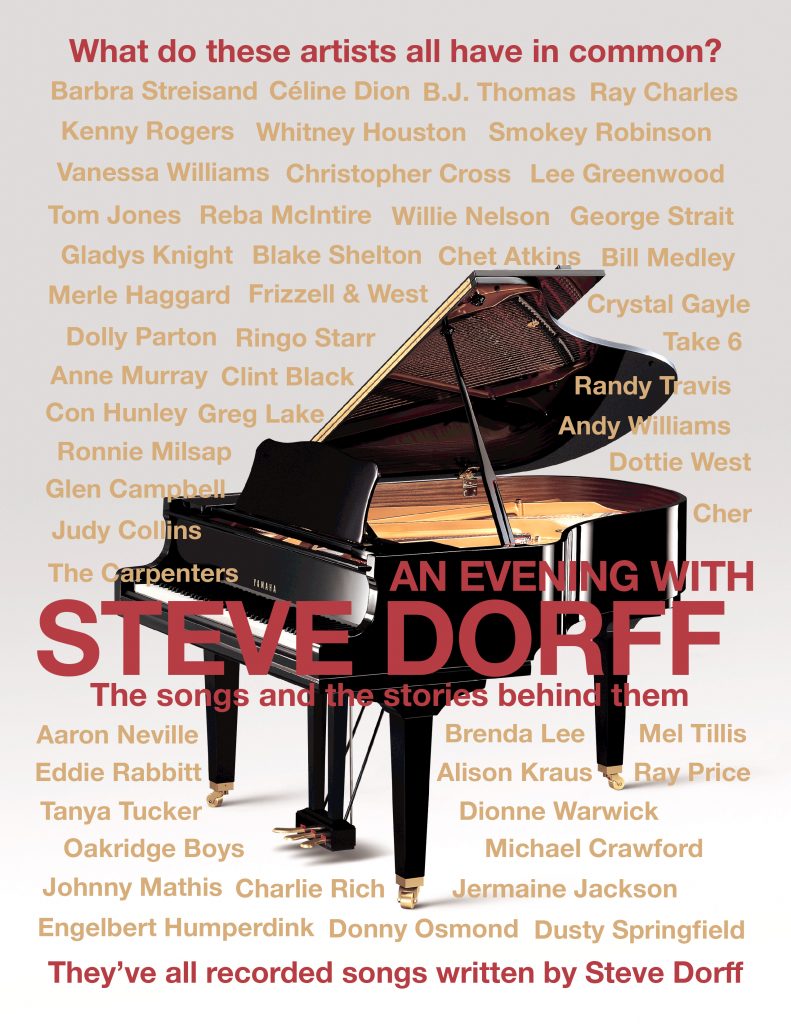
One of your most impressive jobs was on the Emmy nominated “Elvis,” the 2005 biographical CBS mini-series written by Patrick Sheane Duncan, and directed by Jim Sadwith. The cast included Irish actor Jonathan Rhys Meyers, who won a Golden Globe Award for his performance as Elvis. Were you an Elvis fan growing up?
Well, that was a really fun project. The funny thing about that movie was I never thought that I would get that. I was not an Elvis fan. I really wasn’t. My sister Sherry, who is was 10 years older than me, she loved Elvis. When I was a teenager, it was the British Invasion with the Beatles, the Dave Clark Five, the Searchers, Billy J. Kramer & the Dakotas, and Gerry and the Pacemakers. That was my wheelhouse. I was also into the Four Seasons’ music. And that was also the same era.
All of us too listening to “My Boyfriend’s Back” by the Angels in 1963.
Those were the records. That is when I first started playing and writing songs as a teenager. That kind of formed what I was going to do. It really started for me when I was 5 or 6 when I first saw Leonard Bernstein conducting the New York Philharmonic (on CBS-TV’s “Omnibus,” a weekly program funded by the Ford Foundation) on a black-and-white TV. It was mesmerizing. I remember telling my mother, “That is what I going to do.” And she just laughed. Between that and this imaginary orchestra in my head underscoring everything that I did in my life. Then as I got older, and I heard all of these great records being made, and I started listening to the radio. Started going to Woolworth, and buying records. That is what kind of knocked me out.
You’d be picking up on Cousin’s Brucie’s raucous Four Seasons’ “Go Go” theme with his celebrated Brooklyn mega voice exhorting, “Ye-u-ss, hello everybody all over America, this is your Cousin Brucie. It’s the WABC Party”—GO GO…”Whoa, everybody sing. I can hear you.”
Oh yeah, and Murray the K.
Murray Kaufman, the scream king of New York radio on WINS who during the early days of Beatlemania crowned himself as “the fifth Beatle.” Of course, you would have been into records like “Good Lovin’” by the Young Rascals featuring Felix Cavaliere on his Hammond B3 organ with a Leslie Tone Cabinet speaker.
A funny story. Four or five months ago, I was sitting in a sushi restaurant here in Nashville, and there’s this older guy sitting over at the next table. I kept looking at him, “That guy looks familiar.” And I couldn’t place him. And I kept looking over. He was sitting by himself. Finally, it hit me. We were getting up, and I’m paying my cheque, I said, “Excuse me, sir. Is your name Felix Cavaliere?” And he looked at me, and he said “Yes.” It was Felix. I ended up sitting down and talking to him for about 10 minutes. It was really fun.”
So if you weren’t a fan, how did you land “Elvis.”
What a time. What a time. So I got a call from my agent to meet on this Elvis mini-series. I took the meeting. It was about a 20-minute meeting with Jim Sadwith. He had just come off this great “Sinatra” (1992) miniseries (developed and executive produced by Frank’s youngest daughter Tina Sinatra). I met with Jim, and we had a nice chat. I was very honest. I said, “I don’t know that much about this kind of music.” There were two other composers that I knew they were meeting with. I just knew that there was no chance that I was going to get that gig because I didn’t think that I was the most qualified. I got in my car and drove to lunch over in Studio City, and I was getting out of my car, and my agent called me. He said, “I have some good news and some bad news.” I said, “Well, give me the good news.” He said, “You’ve got the Elvis project.” And I said, “What’s the bad news?” He said, “It’s due in 10 days. They moved the post production schedule up. CBS loves it and wants to air it.” So I had 10 days to do Part One, and then I had a little extra time to do Part Two. But in doing that mini-series, I became such a fan of rockabilly because that is what I had to throw myself into.
Rockabilly singer Ronnie Hawkins was said to have fired a young David Foster because he put too many chords in “Bo Diddley.”
Exactly.
You and David had similar session histories in L.A. when Sunset Sound, the Village Recorder, Cherokee Studios, The Sound Factory, United Western Recorders, Gold Star Studios were all quality independent studios.
Yeah, David and I, we have been friends for many, many years. We both came up together at the same time along with the Toto guys, Steve Lukather and David Paich. We all did sessions together.
The first time I heard David play the piano was on a Glen Campbell record (1980) that I had written, and I was arranging. It was the title track of Clint Eastwood’s 1980 film, “Any Which Way You Can.” David is just such a great player.
(David Foster’s career kicked off with the Vancouver band Skylark. Their 1972 single “Wildflower” reached #9 on the Billboard Hot 100 and was a #10 hit in Canada. Foster. and session guitarist Jay Graydon, then formed the short-lived band, Airplay. He went on to play on sessions for George Harrison, and Earth, Wind and Fire and produced, and wrote for the Tubes, and Boz Scaggs.)
How did you come to be in the studio working with Glen and David on a Clint Eastwood film soundtrack that was produced by the legendary Snuff Garrett.
I was brought to L.A. by Snuff Garrett.
(At Liberty Records, Snuff Garrett began producing hits with Johnny Burnette, and Bobby Vee, and when he left after 7 years and started Snuff Garrett Productions and its offshoots, Viva and Snuff Garrett Records, with hits with Gary Lewis and the Playboys, Cher, Vicki Lawrence, Johnny Mathis, Jim Nabors, and Del Shannon in the ’70s.
In the late ’70s, Garrett began producing soundtracks for Burt Reynolds and Clint Eastwood films. He also produced and released the popular albums, “The 50 Guitars of Tommy Garrett” and “The 25 Pianos of Tommy Garrett.”
Snuff brought me to L.A. of kind of be his next Leon Russell. Leon did all of Snuff’s records. Snuff didn’t know a C sharp from a F. He was not a musical guy.
Snuff worked with many young artists early in their careers, working with arrangers like Felix Slatkin, and Ernie Freeman. Then he brought Leon Russell in as his junior partner at Snuff Garrett Productions that led to Gary Lewis and the Playboys having a long string of Top 10 pop hits including “This Diamond Ring,” “Count Me In,” “Save Your Heart for Me,” “Everybody Loves a Clown, “She’s Just My Style” “Sure Gonna Miss Her.”
Well, Leon made those records. I came in after that with the Clint Eastwood movie “Every Which Way Loose” (1978), and when Snuff started working with Burt Reynolds’ “Smokey and the Bandit.” I started writing songs for all of those movies. I was his go-to guy. Snuff taught me a lot. He gave me so many great opportunities to start my career. After almost 10 years, I left to go out on my own.
You were with Snuff that long?
I was. I did so many records with Snuff. I did all of the David Frizzell & Shelly West recordings.
In 1981 “You’re The Reason God Made Oklahoma” hit the top of the country charts, the most successful of 7 country hits by the duo, the two earned the CMA’s Song Of The Year and Vocal Duet Of The Year awards, while the track was also featured in Clint Eastwood’s, “Any Which Way You Can.”
The thing about Snuff was that being from Texas he loved country music. Everybody always asks me, “How did a guy from Queens, New York get into country music?” I couldn’t spell country when I started. I didn’t see a tree until I was 14. I was a rock and roller. I loved theatre music and I loved movie scores. That was music that I loved.
How did Snuff find out about you?
Well, I came out to L.A. with about enough money to last me a week that I borrowed from my sister. I just beat on doors. I knocked on doors, and I went to all of the producers of the day.
L.A. can be a lonely town for someone seeking a job.
Well, I had an old rent-a-car, and I stayed at a little Motel 6 type place off Sunset Boulevard. This was back in the early ‘70s. I was pretty defeated because I was dropping off demoes that were probably getting thrown right into the trash.
Wrote anthology editor David Kukoff in the introduction to his 2016 book “Los Angeles in the 1970s: Weird Scenes Inside the Gold Mine”: “Los Angeles in the ‘70s was still, put simply, very much the Wild West, the last decade in which Los Angeles bore some resemblance to the frontier town it had once been.”
Looking back I remember rents being cheap in L.A. then. I remember the Lakers winning their first NBA championship in 1972 with a 33 game winning streak. I also attended the 1969 opening of “Hair” at the historic Aquarius Theatre which had been painted by the Dutch art collective The Fool. The show ran to 1971.
Hippie culture was in the air then in L.A.
A long story short, I got back to my hotel one night, pretty defeated, and getting ready to leave town, and my little phone was blinking in the motel room. I picked it up, and it was Snuff Garrett’s office saying, “Please give us a call.” I did and Snuff happened to be in the office. It was around 6 o’clock at night. He said, “What are you doing?” I said, “I’m doing nothing. Getting ready to go back to Atlanta.” He said, “Can you come to my office?” I said, “Yes sir, when? “He said, “How about right now?” And so I did, and I played him a few songs at the piano, He said, “I want you to come in tomorrow and meet with my guy, Don Blocker, who was the general manager of his company, Garret Music Enterprises. They offered me a deal, and said, “Can you move out here?”
Alongside Snuff at Garret Music Enterprises was a formidable team including: Al Capps who worked with the more straight pop acts; he had worked with Sammy Davis Jr., the Everly Brothers, Robert Goulet, Gary Lewis and the Playboys, the Manhattan Transfer, Dean Martin, Johnny Mathis, Liza Minnelli, the Nitty Gritty Dirt Band, Frank and Nancy Sinatra, and Spiral Staircase. And there was producer and engineer Lenny Roberts who worked with rock acts; he had worked with Frank Sinatra, Liza Minnelli, Bobby Sherman, and the Brady Bunch. Bob Dain handled publishing.
That was around the time that Snuff was working with Cher? He put Cher back on the pop-star map.
Yep, and he threw me right into it. I started arranging and playing on dates. I did a song for Cher called “Pirate” which could be one of the worst records that she ever recorded.
Truly, It was. It was the first single from her 14th album “Cherished” (1977) which you worked on. “Pirate” debuted at #96 on the Billboard Hot 100 and peaked at #93 the following week.
Snuff was into that theme period. She (Cher) was a gypsy, an Indian chief, half-bred, and so on.
Check out “Pirate.”
Although it received rotten reviews, Clint Eastwood’s 1978 film “Every Which Way but Loose” was a box office smash, and became, along with its 1980 sequel “Any Which Way You Can,” his highest-grossing films. The title song, “Every Which Way but Loose,” co-written by you, Snuff, and Milton Brown, recorded by Eddie Rabbit, spent three weeks at #1 on Billboard’s Hot Country Singles chart.
There’s the story of Clint having issues with songs for “Every Which Way Loose” and you were brought in because of Snuff’s involvement as the music supervisor. Snuff called you, and you asked when did Clint need the music, and Snuff said, “Tomorrow morning.”
That’s a true story.
You collaborated with Milton Brown.
Milton, my dearest friend. The brother that I never had. We wrote that song in about 30 minutes over the phone. He was in Mobile, Alabama, and I was in Los Angeles. The next day I played it over the phone for Snuff. He was the music supervisor for that movie. Steve Wax was working with Clint. That is how Snuff got involved because Steve and Snuff were good friends.
I remember Steve Wax as executive VP at Elektra/Asylum back then, and as music supervisor for films, and later as co-manager of Barry Manilow.
Clint had said to Steve Wax, “I’ve got this movie. It is kind of country. Who do I use?” Steve recommended Snuff who called me to write the song. This whole business, isn’t it about timing, and being at the right place at the right time?
You ask, “Well, what’s the movie about?” It’s about Clint as a trucker roaming the American West in search of a lost love while accompanied by his brother/manager, and his pet orangutan, Clyde, and being chased by a motorcycle gang. “Yeah, I can write music for that.”
So we wrote this song, and I played it on the piano for Snuff, and Steve Wax the next day, and they flipped out. They called Clint. We went over to the studio and I played it for Clint.
Among acts you produced early on working for Snuff were Eddie Reeves, Ginger Boatwright, Arthur, and Hurley & Gottlieb. I am surprised Snuff didn’t recruit you to work with the Johnny Mann Singers which recorded over three dozen MOR albums.
No, I didn’t get to do that. I did get thrown into doing Roger Williams, the piano guy, very early on.
My wife Anya Wilson worked for Snuff in the late ‘70s when he had Nostalgia Merchant which specialized in selling videos of vintage films and television programs, and posters signed by Mae West, Shirley Temple, Roy Rogers, and others.
I know it well. I was there during all that. Snuff was such a film and nostalgia person.
We have a giant signed Mae West poster in our living room.
I was actually at Mae West’s apartment when she signed those (autographing a limited edition run of 2,000 prints bearing her name and image). I have a Shirley Temple poster in my studio.
We also have a poster signed by Roy Rogers.
I don’t know if you know, but I did Roy’s LP “Hoppy, Gene and Me” LP (released by Nostalgia Merchant in 1977).
I knew you had arranged, and co-wrote the title track.
Yeah, I co-wrote that. I arranged and conducted (the orchestration for) the entire album which was produced by Snuff.
Decades ago, you couldn’t easily place a country song into a TV or film soundtrack. In recent years, music supervision has been handled by younger people with backgrounds in pop, rock, country, and hip-hop.
Right. Well, it has become a varied art form, film music.
I, for one, was most impressed with your sterling work on the 1987 film “My Best Friend is a Vampire.” Surely one of the highlights of your career.
(Laughing) That was a wild one.
Then there’s “Dudley Do-Right” in 1999, which starred Brendan Fraser as the cartoon’s titular Mountie.
“Dudley Do-Right,” I am really proud of that score. The movie tanked, but I really enjoyed doing the music on that film. The whole film and television side of what I’ve done over the years is a whole different me. It is a whole different set of muscles.
Is it true you were in London in 1985 scoring a film when your agent called, and asked if you’d be interested in doing the music for a television pilot? The show led to the TV series “Spenser For Hire” which went on to run from 1985-1988, and you contributed to 59 episodes.
That story is true. I was scoring “Rustlers Rhapsody,” a Hugh Wilson-western spoof film with Andy Griffith and Tom Berenger. It was a great film, and a great experience scoring in London with the London Symphony.
“Spenser For Hire” was the beginning of your highly successful television music career?
“Spenser For Hire” was my first. It was a backdoor pilot. It was a two-hour “Movie of the Week.” My agent called me and asked when I was coming back. That there was a two-hour “Movie of the Week” pilot. Would I like to do it? “It’s with Robert Urich.” I said, “Bob Urich is one of my dear friends. We live across the street from each other. I obviously would love to do it.” So when I came back to L.A., I met with the Warner Bros. people at the studio, and the executive producer of the show, and I got the gig. I did the show for three years. That kind of kicked off the whole Warner Bros. television thing for me leading to ”Growing Pains,” and “Murphy Brown.”
You did 167 episodes of “Growing Pain” from 1985 to 1992. You and John Bettis co-wrote the theme song, “As Long As We’ve Got Each Other,” first performed by B.J. Thomas, and then a duet with him and Jennifer Warnes for the second season onward. The show, which ran for seven seasons, grew even more popular in syndication.
I was asked to write a theme song, and I asked John Bettis if he wanted to do it with me as we were scheduled to write that week. We wrote the 60-second version in about an hour. John came up with the title, “As Long As We’ve Got Each Other.” I played it for the producers the next day. They loved it and suggested Frankie Valli to sing it. I had worked with B.J. Thomas several times over the years, and I thought he was a better fit. We adapted it as a duet in the second season with Jennifer Warnes. We later wrote a second verse and B.J. and Dusty Springfield recorded in 1988 (as did Louise Mandrell with Eric Carmen).
You turned up for 91 episodes of “Murphy Brown.”
Well “Murphy Brown” was 10 years (1988-2018). “Murphy Brown” was probably my longest show on the air. Then, success sort of breeds success, I started doing shows over at Universal. I did “Uncle Buck” (5 episodes), ”Major Dad” (70 episodes) I had 5 or 6 shows on the air at the same time. I did “Murder She Wrote” (25 episodes), “Alien Nation” (10 episodes), “Reba” (22 episodes). I was doing some of the two-hour “Columbo” movies. That kind of took me out of the record business for a while because there are just so many hours of the day.
Generally, you’d read the script a few times, look at the pilot, meet with the producers or creative team behind the show, and then go home and sit at the piano and wait for inspiration to happens.
Yep.
TV themes largely focus on musicality and melodies, but TV themes are usually also very positive lyrically. Many of your TV themes underscore how things should be.
Yeah maybe so because you are writing for millions of viewers. So you subconsciously want to do something that is highly relatable, especially if it is a family show. But scoring is totally different. In “Columbo,” and “Murder She Wrote” you are writing themes about grisly murders, and helicopter chases. But you are right, the theme songs, you want to write something that is generally acceptable, and relatable by a large mass audience.
TV work is demanding but lucrative.
It is but it is like being on a treadmill, and you can’t get off until they wrap for the season, and then you take a deep breath.
Not if you are simultaneously doing five shows. Most music work for TV is work-for-hire in which you give up your copyright and publishing rights. The TV studio or production company usually retains copyright and the publishing. You get half of the royalties which is commonly referred to as the composer’s share.
Yes. You hit the nail on the head. It is extremely lucrative because you are not only getting the performance income from BMI or ASCAP (or SESAC), but you are also getting a fee to create the music. When I write a song for Barbra Streisand or Keb’ Mo’ or Celine Dion or Kenny Rogers, nobody is paying me a fee to do that unless I’m writing it for a specific film project. So yeah, it’s a different animal.
It’s one thing hearing your music on the radio and another hearing your music with an audience in a movie theatre, or on television week after week in a series. It must be quite a thrill.
Oh, it’s incredible. Again, Larry, I pinch myself every time I hear a song of mine on the radio. A couple of weeks ago I was channel surfing at night, and a “Columbo” (episode) came on, and I saw my name on it because I had scored it. I watched the whole thing, and I cringed, thinking, “I can’t believe that I wrote that, and they let it go.” Stuff that you did 20 or 30 years, and it’s still being played. “Growing Pains” is still on every day somewhere.
You have separate representation for your film and TV work?
Yes. The Gorfaine/Schwartz Agency, Mike Gorfaine and Sam Schwartz
The Gorfaine/Schwartz Agency has represented film and TV orchestrator John Williams, James Newton Howard, Thomas Newman, James Horner, Michael Giacchino and Mike Post as well as artists James Taylor, and Yo-Yo Ma, and songwriter/producer Glen Ballard.
How long have you been with Gorfaine/Schwartz?
Oh my God. Over 25 years.
You need separate representation to work in film and TV?
You really do.
Years ago, you wrote with my wife’s former fiancée, Tony Macaulay. He and John MacLeod co-wrote the Foundations’ 1967 hit “Baby Now That I Found You” about my wife, Anya Wilson.
Tony Macaulay and I wrote a couple of great songs together. He was nominated to be inducted into the Songwriters Hall of Fame the same year that I was, and he didn’t get in. I love Tony. We wrote some killer songs. We wrote a song called “You Can’t Take The Telephone To Bed.” There’s another one, “If I Ever Get That Carried Away.” I love the song. I listen to it every once in a while. We wrote some fun songs, and we really got along great. He was on a visit to Los Angeles (from the UK), and we got to write together for about a month.
Grammy award-winning engineer/producer Al Schmitt passed away on April 27, 2021. In his 91 years, Al received 20 Grammy awards. Did you two ever work together?
Yes. In fact, Al was my next door neighbor for 7 years in Bell Canyon (in eastern Ventura County). Al was a lovely, lovely man. We worked together on a Dolly Parton track, and an Aaron Neville track that I did the arrangements for, and Al engineered those. And he did the Anne Murray’s “Duets” album with Phil Ramone.
Years ago Phil told me of the difficulties he had faced being accepted as a producer, rather than as an engineer. He won his first production Grammy for his work on Paul Simon’s album “Still Crazy After All These Years” (1975), and produced Billy Joel’s 1977 album “The Stranger,” and began a long-term collaboration with Billy.
It happened to me that way too. Production is sort of the outgrowth of the arranging and the songwriting. That is how it happened for me.
Tell me about “Pure Country,” the stage musical that will debut in 2022 at Theatre Under The Stars in Houston.
We were scheduled to open on April 16th of last year. We were in rehearsals, and the pandemic hit, and it went bye-bye. The good news is that Houston is hell-bent on making this happen. It is a production that they are very excited about and it is the perfect place to launch “Pure Country.” The good news is that it is being scheduled for Houston for the Fall of 2022.
Are you surprised in the interest shown “Pure Country” over the years? The film was in 1992, almost 30 years ago.
I really am not. The movie has such a cult following that it is still shown on CMT almost every day. And the two big George Strait hits that I wrote with John Bettis and Eric Kaz, “I Cross My Heart,” and “Heartland” are still two of the most recurrent performed songs on country radio with George Strait. He’s the King as he’s called. (“The King of Country Music” with 22 total CMA Awards, a Grammy award, and a catalog of 33 platinum albums). But yeah, this movie just won’t go away. So we have been working on the show for over 10 years, maybe longer. In development, we did a series of workshops in New York and readings, changes, and rewrites.
Who is the director?
The director is Dan Knechtges. He’s the artistic director of Houston’s Theatre Under The Stars which is one of their pre-eminent regional theatres in the country, in the world.
Are you expecting to take the “Pure Country” musical to Broadway?
I don’t think that Broadway is the right place for it. You never know. I think that this is a show that can play around the country. I think of “Pure Country”, I mean the heartland of America, and by the way, we have a co-producer in Calgary, that wants to do it. They want to do it in Calgary. So we are optimistic that, hopefully in about 9 months from now, we will be starting to rev up casting and pre-production, and be in Houston in the Fall of 2022.
How far back did you and John Bettis begin work on your musical of Josephine Baker, the American-born French entertainer, and French Resistance agent?
Well, the Josephine Baker story, oh my God. I would say 16 years of development. John Bettis and I have written 65 songs for that show which still has about 20 left in it. It has been part-heartache and part thrilling, as all of these things are, it’s a great story about a great African-American icon who went to Paris. Our show takes place in Nazi-occupied Paris from 1939 to 1945.
Josephine Baker first arrived in Paris in the fall of 1925, with producer Caroline Reagan and the cast of La Revue Nègre—the white socialite’s attempt to bring Black American culture to Europe.
It is incredible that Josephine Baker stayed in France after Germany invaded in May 1940. She became a spy for the French Resistance. Known as the “Creole Goddess” of France, she used her celebrity status to gain access to high-ranking Axis officials.
She went underground in the Resistance. She lost her ability to have children. Hermann Goering poisoned her with cyanide. We delve into that. and there was also an amazing love triangle between Josephine and the young Crown Prince Gustaf-Adolf
The book was written by Ellen Weston and Mark Hampton with lyrics by John Bettis and produced by Ken Waissman who produced “Grease” on Broadway and “Torch Song Trilogy.”
There are over 20 books on Josephine Baker.
Ours is based on the (1976) book “Remembering Josephine Baker” which was written by (former Hollywood choreographer and stage producer) Stephen Papich who was Josephine’s long-time manager, and best friend.
Stephen Papich produced and directed Josephine’s Baker’s touring show in the United States in the 1960s and early ‘70s.
Yes. Warner Bros. Pictures actually had a Josephine Baker film based on his book in turn-around, and then Ken Waissman bought the rights to that book way back when.
There was the “The Josephine Baker Story “ television film that aired on HBO in 1991.
It starred Lynn Whitfield Yes, an HBO show but never a Broadway show. We are waiting for the world to come back, and hopefully with the success of “Pure Country,” we will be able to jump-start “Josephine” again because she’s not going away, and her story is not going away.
There was a concert, “I Wrote That One Too: An Evening with Steve Dorff: The Hit Songs and The Stories Behind Them,” performed in 2019 at the Pollak Theatre at Monmouth University with you. Will there be more such performances?
This is a show I do at the piano myself, and yes, there will be more scheduled now that the pandemic is in the rearview mirror.
How about you commercially recording your songs?
If you heard me sing, you’d know why you never hear me on the radio
Larry LeBlanc is widely recognized as one of the leading music industry journalists in the world. Before joining CelebrityAccess in 2008 as senior editor, he was the Canadian bureau chief of Billboard from 1991-2007 and Canadian editor of Record World from 1970-80. He was also a co-founder of the late Canadian music trade, The Record.
He has been quoted on music industry issues in hundreds of publications including Time, Forbes, and the London Times. He is a co-author of the book “Music From Far And Wide,” and a Lifetime Member of the Songwriters Hall of Fame.
He is the recipient of the 2013 Walt Grealis Special Achievement Award, recognizing individuals who have made an impact on the Canadian music industry.

